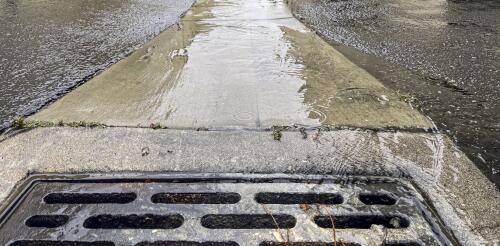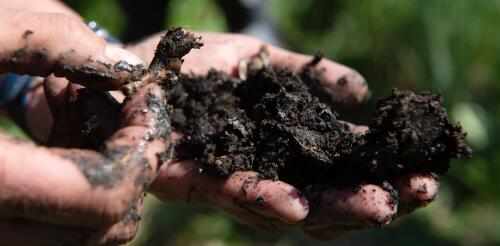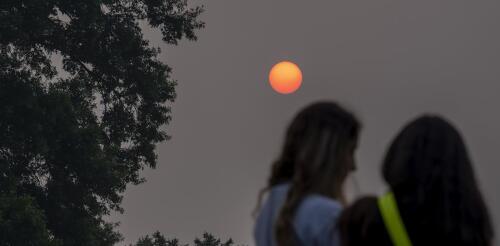environment
Recent reports that the H5N1 avian flu virus has been found in cow’s milk have raised questions about whether the U.S. milk supply is safe to drink. According to the federal Food and Drug Administration, the answer is yes, as long as the milk is pasteurized. Nonetheless, raw (unpasteurized) milk sales are up, despite health experts’ warning that raw milk could contain high levels of the virus, along with many other pathogens. As an extension food scientist in a state where raw milk sales are legal, I provide technical support to help processors produce high-quality, safe dairy foods. I also like to help people understand the confusing world of pasteurization methods on their milk labels, and why experts strongly discourage consuming raw milk and products made from it. What can make milk unsafe Dairy products, like many foods, have inherent risks that can cause a variety of illnesses and even death. Our milk comes from animals that graze outdoors and live in bar...
America’s first large-scale offshore wind farms began sending power to the Northeast in early 2024, but a wave of wind farm project cancellations and rising costs have left many people with doubts about the industry’s future in the U.S. Several big hitters, including Ørsted, Equinor, BP and Avangrid, have canceled contracts or sought to renegotiate them in recent months. Pulling out meant the companies faced cancellation penalties ranging from US$16 million to several hundred million dollars per project. It also resulted in Siemens Energy, the world’s largest maker of offshore wind turbines, anticipating financial losses in 2024 of around $2.2 billion. Altogether, projects that had been canceled by the end of 2023 were expected to total more than 12 gigawatts of power, representing more than half of the capacity in the project pipeline. So, what happened, and can the U.S. offshore wind industry recover? Estimates...
“When it rains, it pours” once was a metaphor for bad things happening in clusters. Now it’s becoming a statement of fact about rainfall in a changing climate. Across the continental U.S., intense single-day precipitation events are growing more frequent, fueled by warming air that can hold increasing levels of moisture. Most recently, areas north of Houston received 12 to 20 inches (30 to 50 centimeters) of rain in several days in early May 2024, leading to swamped roads and evacuations. Earlier in the year, San Diego received 2.72 inches (7 centimeters) of rain on Jan. 22 that damaged nearly 600 homes and displaced about 1,200 people. Two weeks later, an atmospheric river dumped 5 to 10 inches (12 to 25 centimeters) of rain on Los Angeles, causing widespread mudslides and leaving more than a million people without power. Events like these have sparked interest in so-called sponge cities – a comprehensive approach to urban flood mitigation that uses i...
In July 2024, all eyes will turn to Paris for the Summer Olympic Games. Spectators from around the globe will converge on the City of Light to watch athletes compete and to soak in the culture, romance and history of one of the world’s most recognizable cities. But an iconic Paris landmark, the Notre Dame cathedral, will still be under renovation after a devastating fire that ignited in the cathedral and burned for 12 hours on April 14, 2019. When the last embers were extinguished, most of Notre Dame’s wood and metal roof was destroyed, and its majestic spire had vanished, consumed by flames. Notre Dame is nearly 1,000 years old and has been damaged and repaired many times. Its last major renovation was in the mid-1800s. The massive beams that framed the structure were fashioned from European oak trees harvested 300 to 400 years ago. Today, these trees are common throughout north-central Europe, but few are tall enough to replace Notre Dame’s roof lattice an...
Dozens of wildfires are burning across Canada in May 2024 and sending unhealthy smoke blowing into the northern U.S. again. At the same time, the southeastern U.S. is getting smoke from Mexico, where drought conditions have been fueling fires. Last year, Canada’s record 2023 wildfire season introduced millions of Americans across the Midwest and northeastern states to the health hazards of wildfire smoke, with air quality alerts that reached levels never seen there before. Professional baseball games were postponed and the skies in New York City turned orange with haze, at times exposing millions of people to the worst air quality in the world. In some regions, the smoke hung on for days. The pressing question on many people’s minds: “Is this the new normal?” From our perspective as air quality scientists, we think the answer is likely “yes.” Global warming means more fires Hotter, drier conditions, coupled with dry grasses and underbrush...




